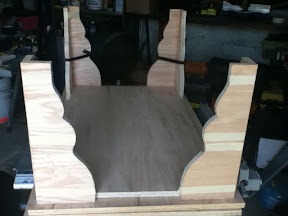We're in Business
/ |
| Better Farm's brand-new, custom-made farm stand and signs. |
So this year, we went bigger.
The amazing crop of interns (Jaci Collins, Natasha Pietila, Soon Kai Poh, and Elizabeth Musoke) set about doubling the size of this year's garden. Then, they (along with artist-in-residence Erica Hauser) built an additional bed for the herb gardens. Transplanting all the babies from the greenhouse took weeks. But when the proverbial smoke finally cleared, the veggies and fruits started coming. And coming. And coming.
With more food due than we can possibly eat, the latest mission has been to expand our outreach. First up was to begin the process of drying many of our herbs (parsley, cilantro, oregano, and dill so far). Next, and probably most important, was to upgrade from last year's farm stand:
Yes, it was totally adorable; but we needed more shade, more space, and more stability against the harsh winds and rains of the North Country. So we enlisted some nice Amish folks down by Pamelia, N.Y., to make us a farm stand just like theirs. We got to pick it up yesterday and stocked it this morning...
 |
| Organic, homemade soaps |
Items available for sale (subject to season and ripeness):
Vegetables—cucumbers, onions, peas, lima beans, brussels sprouts, kale, broccoli, string beans (two varieties), squash (three varieties), pumpkins, cauliflower, cabbage, tomatoes (several varieties), peppers (two varieties), soybeans, beets, carrots, lentils, lettuce, spinach, asparagus
Herbs—chives, mint, cilantro, parsley, oregano, basil, summer savory, chicory, amaranth, chamomile, echinacea
Baked Goods—breads by special order, custom pies, cookies, brownies, and other baked goods. Vegan options available
Homemade Body and Home Care—100% organic soaps, shampoos, conditioners, laundry detergents, and dish soap










































































































